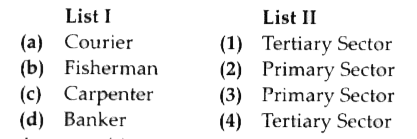Choose the incorrect one form the following in case of a pinhole camera .
It works on the principle of rectilinear propagation of light .s
If the size of hole is decreased , then the image formed is blurred.
If the size of hole is increased , then the image becomes blurred due to super - position of light .
Pinhole camera is also known as camera obsure (dark chamber ).
The correct Answer is:B
Step-by-Step Solution:
1. Understanding Pinhole Camera: A pinhole camera is a simple camera without a lens and other complex features. It consists of a dark chamber with a small hole (the pinhole) on one side through which light enters.
2. Principle of Operation: The pinhole camera operates on the principle of rectilinear propagation of light, meaning that light travels in straight lines. When light passes through the pinhole, it projects an inverted image of the outside scene onto the surface opposite the pinhole.
3. Evaluating the Options:
- Option 1: "It works on the principle of rectilinear propagation of light." - This statement is true.
- Option 2: "If the size of the hole is decreased, then the image won't be colored." - This statement is incorrect. When the size of the hole is decreased, the image becomes clearer and more defined, not colorless.
- Option 3: "If the size of the hole is increased, then the image becomes blurred due to superposition of light." - This statement is true. A larger hole allows more light from different angles to enter, leading to a blurred image.
- Option 4: "Pinhole camera is also known as camera obscura." - This statement is true. The term "camera obscura" means "dark chamber" in Latin, which accurately describes the pinhole camera.
4. Conclusion: After evaluating all options, the incorrect statement is option 2: "If the size of the hole is decreased, then the image won't be colored."
- Option 1: "It works on the principle of rectilinear propagation of light." - This statement is true.
- Option 2: "If the size of the hole is decreased, then the image won't be colored." - This statement is incorrect. When the size of the hole is decreased, the image becomes clearer and more defined, not colorless.
- Option 3: "If the size of the hole is increased, then the image becomes blurred due to superposition of light." - This statement is true. A larger hole allows more light from different angles to enter, leading to a blurred image.
- Option 4: "Pinhole camera is also known as camera obscura." - This statement is true. The term "camera obscura" means "dark chamber" in Latin, which accurately describes the pinhole camera.
Topper's Solved these Questions
- BOOK - PEARSON IIT JEE FOUNDATIONCHAPTER - LIGHTEXERCISE - TEST YOUR CONCEPTS (Fill in the blanks )22videos
LIGHT
- BOOK - PEARSON IIT JEE FOUNDATIONCHAPTER - LIGHTEXERCISE - TEST YOUR CONCEPTS (Short Answer Type Questions )21videos
LIGHT
- BOOK - PEARSON IIT JEE FOUNDATIONCHAPTER - LIGHTEXERCISE - Crossword1videos
LIGHT
- BOOK - PEARSON IIT JEE FOUNDATIONCHAPTER - Force and Pressure EXERCISE - CROSSWORD1videos
Force and Pressure
- BOOK - PEARSON IIT JEE FOUNDATIONCHAPTER - MEASUREMENTS AND MOTIONEXERCISE - CROSSWORD2videos
MEASUREMENTS AND MOTION
Similar Questions
Knowledge Check
- Question 1 - Select One
Choose the incorrect one form the following in case of a pinhole camera .
AIt works on the principle of rectilinear propagation of lightBIf the size of hole is decreased, then the image formed is more clear.CIf the size of hole is increased, then the image becomes blurred due to supper-position of light.DPinhole camera is also known as camera obscure (dark chamber). - Question 2 - Select One
Choose the incorrect one from the following .
APeriscope forms a real image for a real object.BPeriscope form a virtual image for a real objectCObject distance equals to image distance for a plane mirrorDBoth (b) and (c) - Question 3 - Select One
Choose the incorrect one from the following .
APeriscope forms a real image for a real object .BPeriscope form a cirtual image for a real object .CObject distance equals to image distance for a plane mirror .DBoth (b) and (c )




